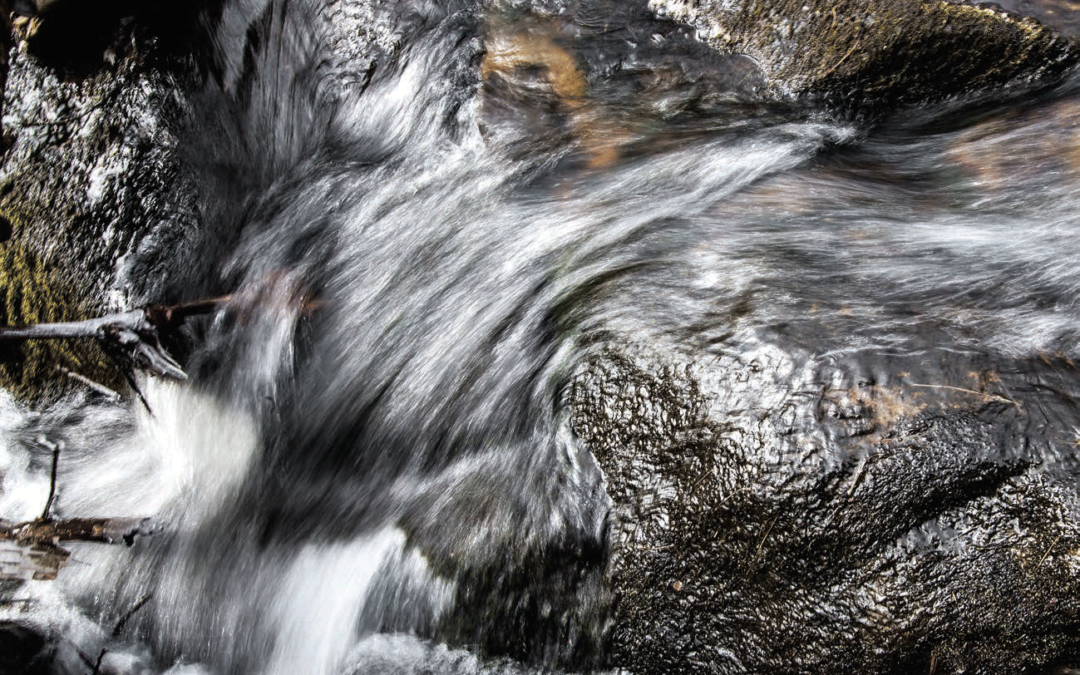BY LEAH WILLINGHAM , PHOTOS BY GEOFF FORESTER
I always knew that spring had arrived when I heard the brook in our backyard roar. I was usually in the kitchen the first time I noticed it, washing dishes after dinner, or untying mud-soaked boots by the back door. I would pause at the familiar rushing sound, thinking for a moment a rainstorm might be coming.
IMAGINATIONS RUN WILD
We moved to the house by the brook when I was 10 years old, and spring was always a special time for everyone in my new neighborhood. The brook in the backyard was full of wooded land with maple, white birch, oak, and pine trees, along with a world of possibilities.
My earlier years in downtown Concord were much different. Although we had a small flower garden in our backyard, there wasn’t much room to explore.
I spent most of my time playing on the aging swings at the old Kimball School, or drawing hopscotch patterns on asphalt in our one-car driveway.
That changed when we moved to the house by the brook on Fisk Road. The couple living next door had two young children around my age, a boy and a girl.
Their father built a treehouse in the woods where his daughter and I would bring our dolls and pretend they were wizards and pirates on great adventures.
The melting snow in spring revealed what we left behind in the fall: clumps of matted leaves, a pair of gloves from a day of sledding, a baseball accidentally thrown too far. We used what we found to build houses for fairies made of sticks, bottle caps, and glass with softened edges that we fished out of the swelling brook.
Some days we created miniature boats out of leaves and twigs to race downstream. We took turns crossing the brook, hopping from one slick, mossy rock to another. Once or twice I slipped and fell in, soaked to the skin and covered with mud.
My mother pulled me into the house, trailing footprints as I went, and got me into the tub. My sneakers sat on the radiator for a week to dry, but they never quite recovered.
A SPECIAL TRANSITION
 I loved the smell of wet earth and melting snow, and the slow transition to lighter clothes and longer days. Each morning, I waited outside for the school bus, dressed in a T-shirt, excited to come home from school to find adventure in the backyard.
I loved the smell of wet earth and melting snow, and the slow transition to lighter clothes and longer days. Each morning, I waited outside for the school bus, dressed in a T-shirt, excited to come home from school to find adventure in the backyard.
On these early spring days, ambitious bikers and joggers began to arrive after dawn and make their way up our hill. The most determined emerged in late March before the last patches of snow had even melted.
And in the wooded area behind our house, where hiking trails wound through the trees, people came from across town to walk their dogs. The leaves had not yet started to grow back, and we could watch their progress deep into the woods.
I didn’t know then how much those little moments would mean to me as I grew older. Now, as an adult, whenever I see fiddlehead ferns begin to unroll in the woods, when the days are lengthening and birds are returning to New Hampshire, I think back to growing up at the house on Fisk Road, sitting in our treehouse, watching last fall’s leaves tumble and disappear in the brook.


 View Print Edition
View Print Edition